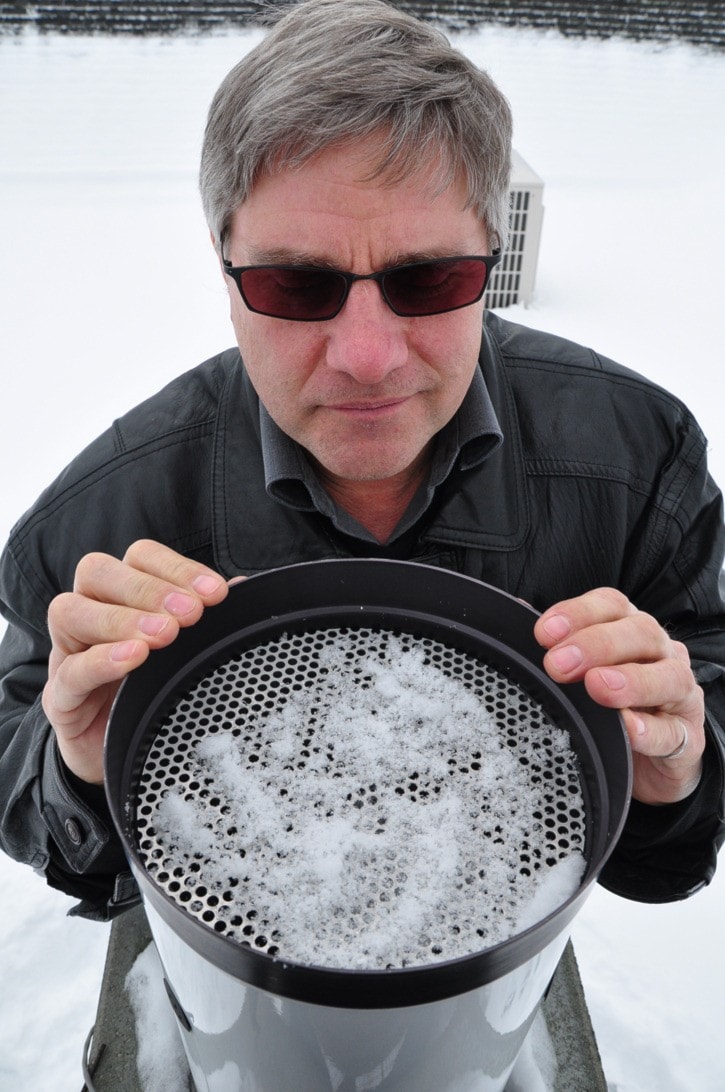Within two days in December, Langford was flooded with 105 millimeters of rain, a storm event with an intensity expected only once every 10 years.
Municipal engineers suspect such storms are becoming more common, or at least less predictable. Langford is trying to get a better read of the local micro-climate and has installed its own weather stations, thanks to affordable technology that links seamlessly to the Internet.
”We couldn’t do this 10 years ago. (Weather station) technology was cost prohibitive and it took a lot of staff time,” said John Manson, Langford’s engineering manager. “It used to be the feds doing it all, but its moved to municipalities. It allows us to track climate change in the community.”
Langford has moved away from relying on Environment Canada weather data and has installed a monitoring station at city hall – logging temperature, rainfall and wind speed – and another at a high point on Bear Mountain. A third is being planned for south Langford. The engineers also have water gauges on three lakes and two creeks to monitor flooding.
Bear Mountain’s solar-powered station also measures snowfall, which is a video camera trained on a graduated tube. As it happens, the recent freezing windstorm knocked the equipment off the hill. “The hardware needs to be beefed up,” Manson remarked.
Previously, Langford staff relied on federal weather stations that circled the West Shore – the Victoria airport, the Gonzales Observatory in Victoria and one near Sooke. Public works manager George Henshall said weather is varies enough across the region to warrant precise local data.
“Langford basically sits next to a watershed. It often snows here where it isn’t downtown or at the airport,” Henshall said. “And we average two degrees less here than downtown.”
The weather stations give Langford a consistent way to manage Victoria Contracting and Municipal Maintenance Corp., which is contracted to clear snow, among other public works duties in the city. Different weather events trigger various levels of response from VCMMC, with according levels of pay.
Prior to installing weather stations, knowing the level of snowfall, for one, was based on guesswork and could trigger disagreements between the contractor and the City.
“Before, how did we know how much snow Bear Mountain had on top or if it was freezing? There was no way to verify. We were working on anecdotal information,” Manson said. “Now there are less arguments, less staff time on this topic.”
“It’s a level of protection for (Langford) in place,” Henshall added.
In operation for more than two years, the stations and water gauges also help the City determine how storm sewers and detention ponds are performing, specifically in flood-prone south Langford. Real-time data allows Henshall to quickly see if a creek is overflowing due to rain or if there’s a blockage – such as trees and debris, or a neighbour’s tipped woodpile.
Over the next years and decades, Langford’s weather stations will help generate an increasingly accurate and broader picture of how weather is changing on the West Shore. Manson said he also wants to get raw data from the University of Victoria weather stations based at most of the schools in the region.
Manson suspects storms hitting Greater Victoria are becoming longer and more intense, and that cities may need to revise what is considered rare. Storms of a magnitude forecast to hit once every 100 or 200 years will likely become more common.
“I’m of the belief we’re getting more Pineapple Express events, these long duration storms that last 12 to 24 hours,” Mason said. “Extreme events are happening more frequently. A 100-year event is a bigger storm than it was 20 years ago.
“The weather isn’t static. It’s changing, we know it is.”
Langford weather station data will be available online at www.cityoflangford.ca under the engineering department.
The University of Victoria school-based weather stations can be viewed at www.victoriaweather.ca.
editor@goldstreamgazette.com
